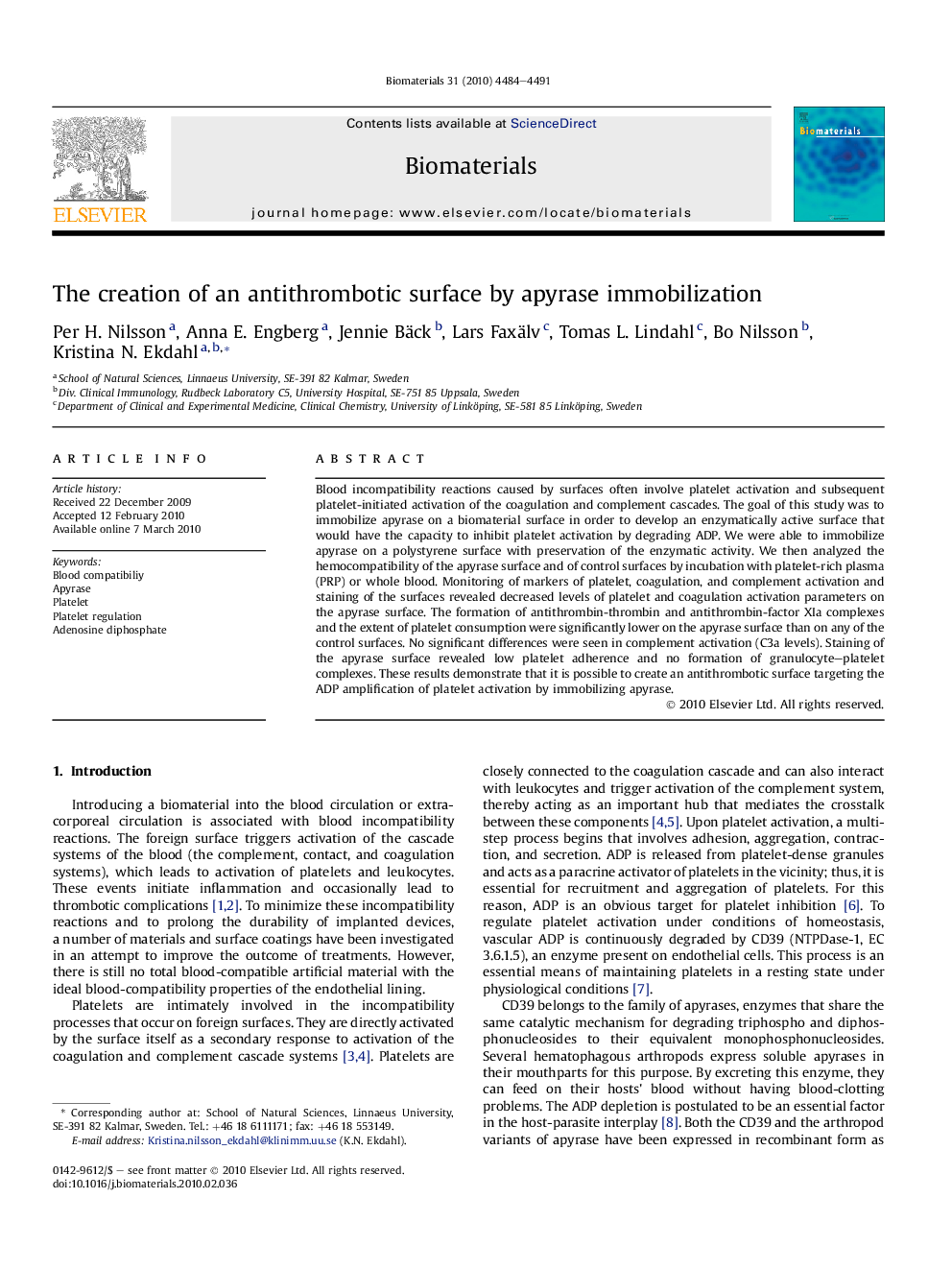| Article ID | Journal | Published Year | Pages | File Type |
|---|---|---|---|---|
| 9004 | Biomaterials | 2010 | 8 Pages |
Blood incompatibility reactions caused by surfaces often involve platelet activation and subsequent platelet-initiated activation of the coagulation and complement cascades. The goal of this study was to immobilize apyrase on a biomaterial surface in order to develop an enzymatically active surface that would have the capacity to inhibit platelet activation by degrading ADP. We were able to immobilize apyrase on a polystyrene surface with preservation of the enzymatic activity. We then analyzed the hemocompatibility of the apyrase surface and of control surfaces by incubation with platelet-rich plasma (PRP) or whole blood. Monitoring of markers of platelet, coagulation, and complement activation and staining of the surfaces revealed decreased levels of platelet and coagulation activation parameters on the apyrase surface. The formation of antithrombin-thrombin and antithrombin-factor XIa complexes and the extent of platelet consumption were significantly lower on the apyrase surface than on any of the control surfaces. No significant differences were seen in complement activation (C3a levels). Staining of the apyrase surface revealed low platelet adherence and no formation of granulocyte–platelet complexes. These results demonstrate that it is possible to create an antithrombotic surface targeting the ADP amplification of platelet activation by immobilizing apyrase.
